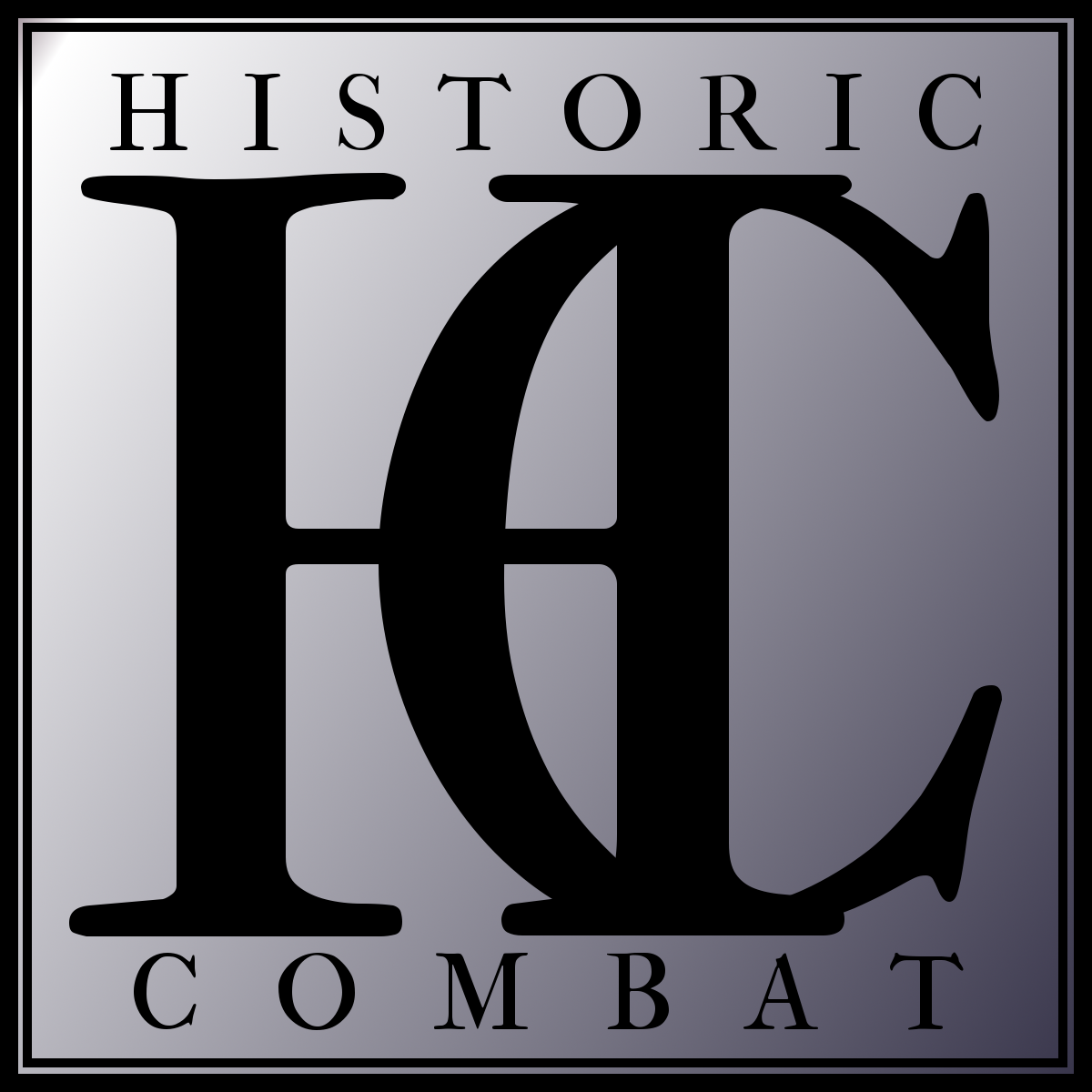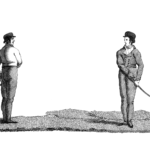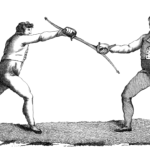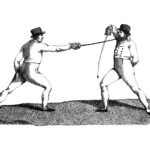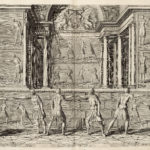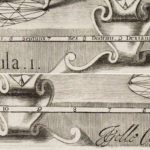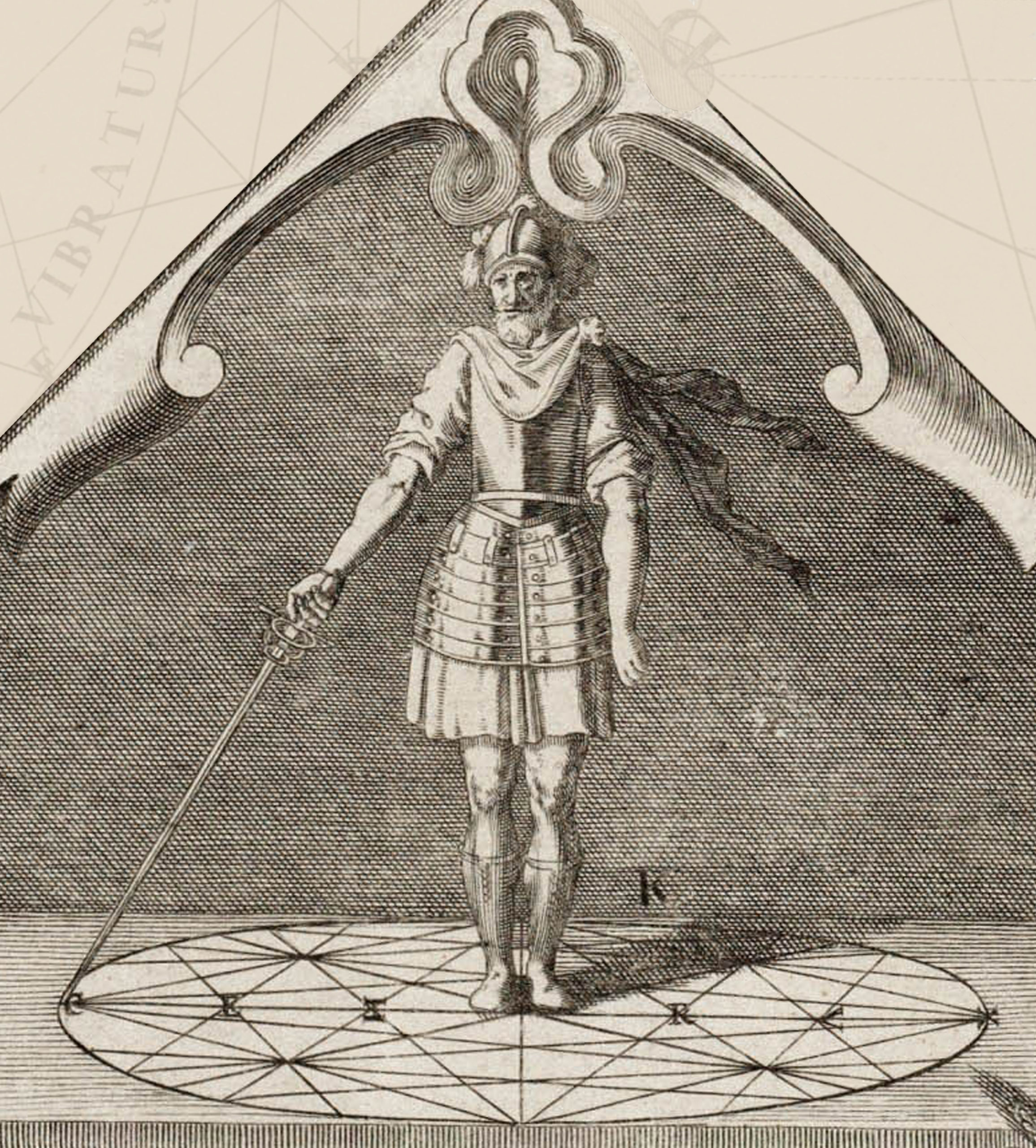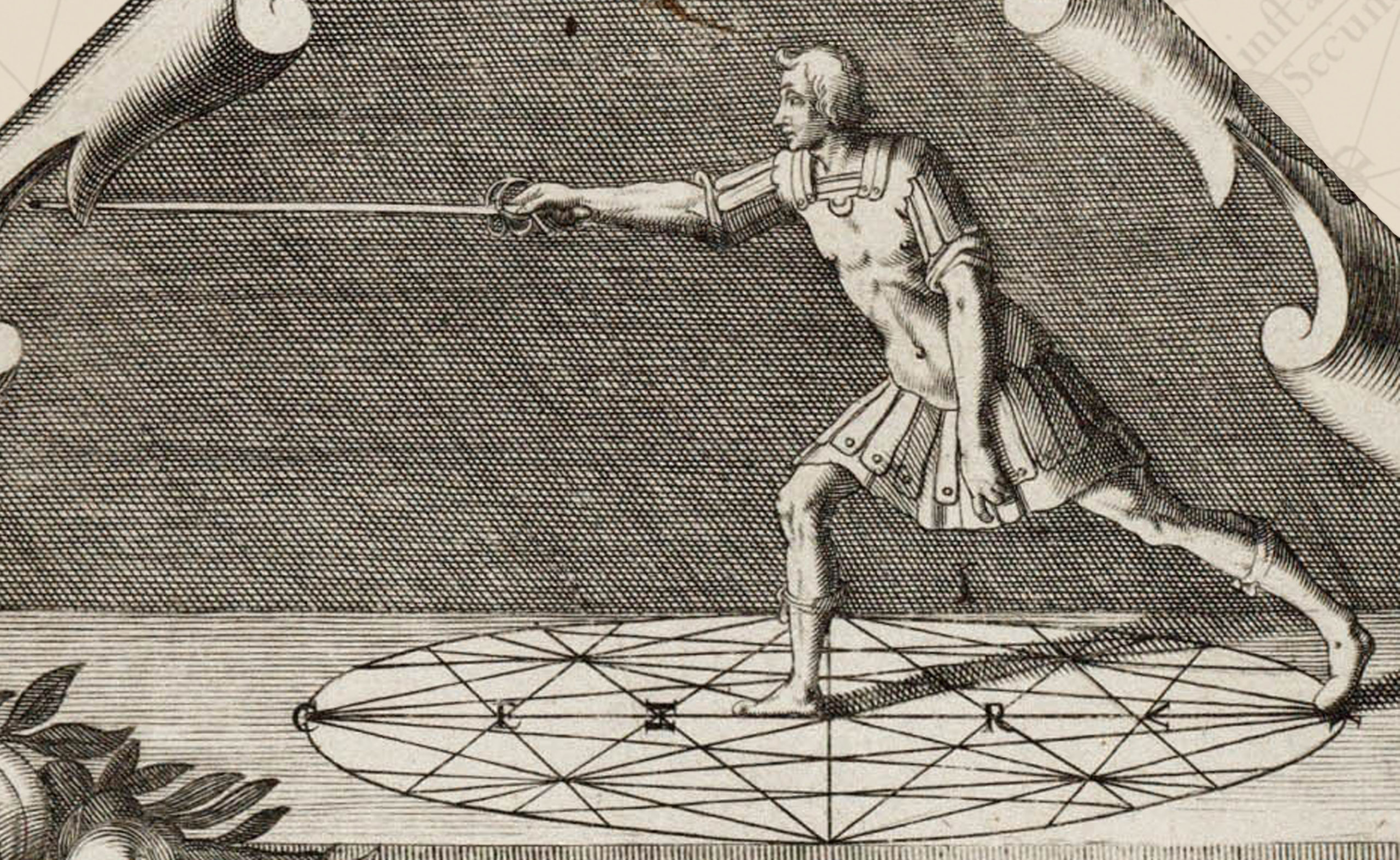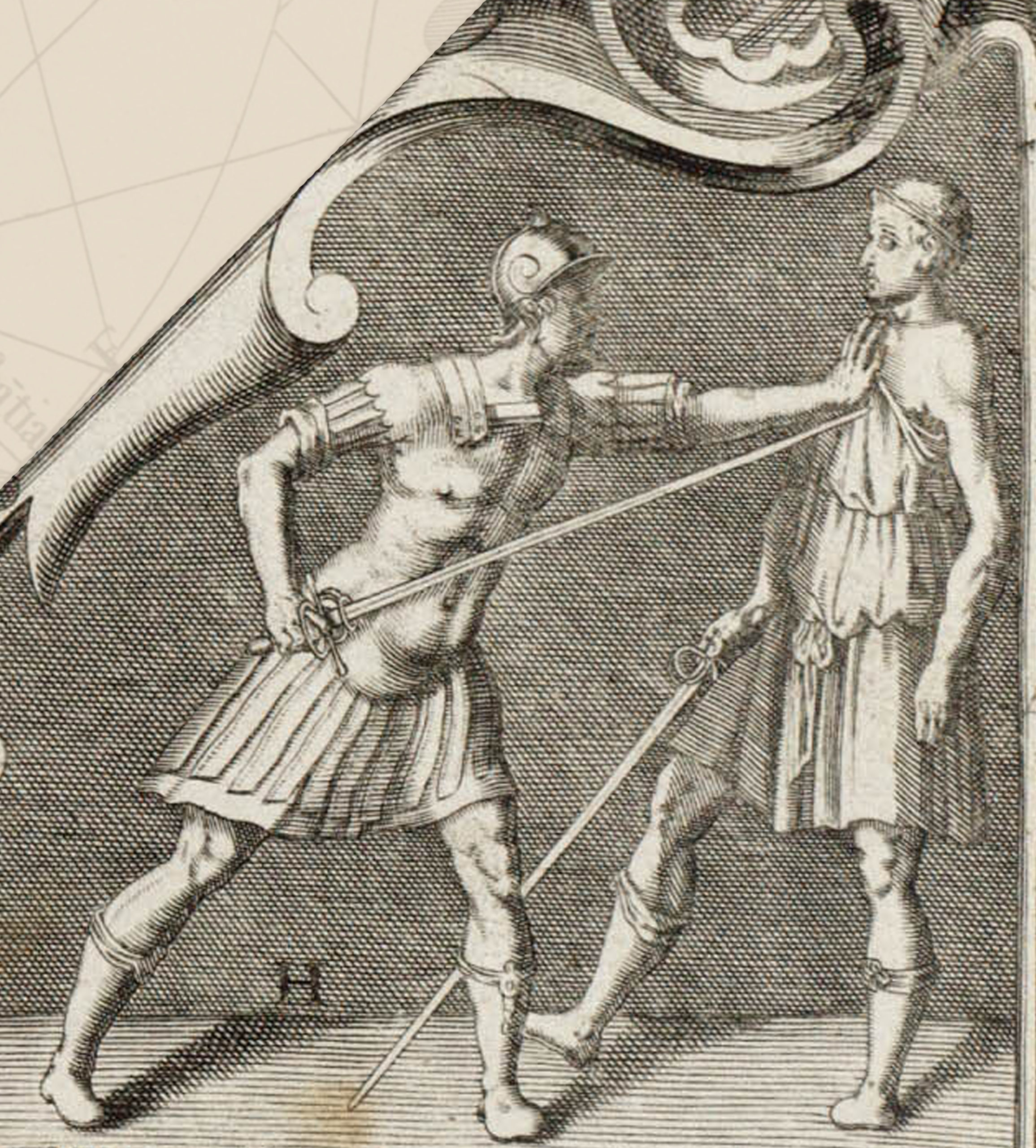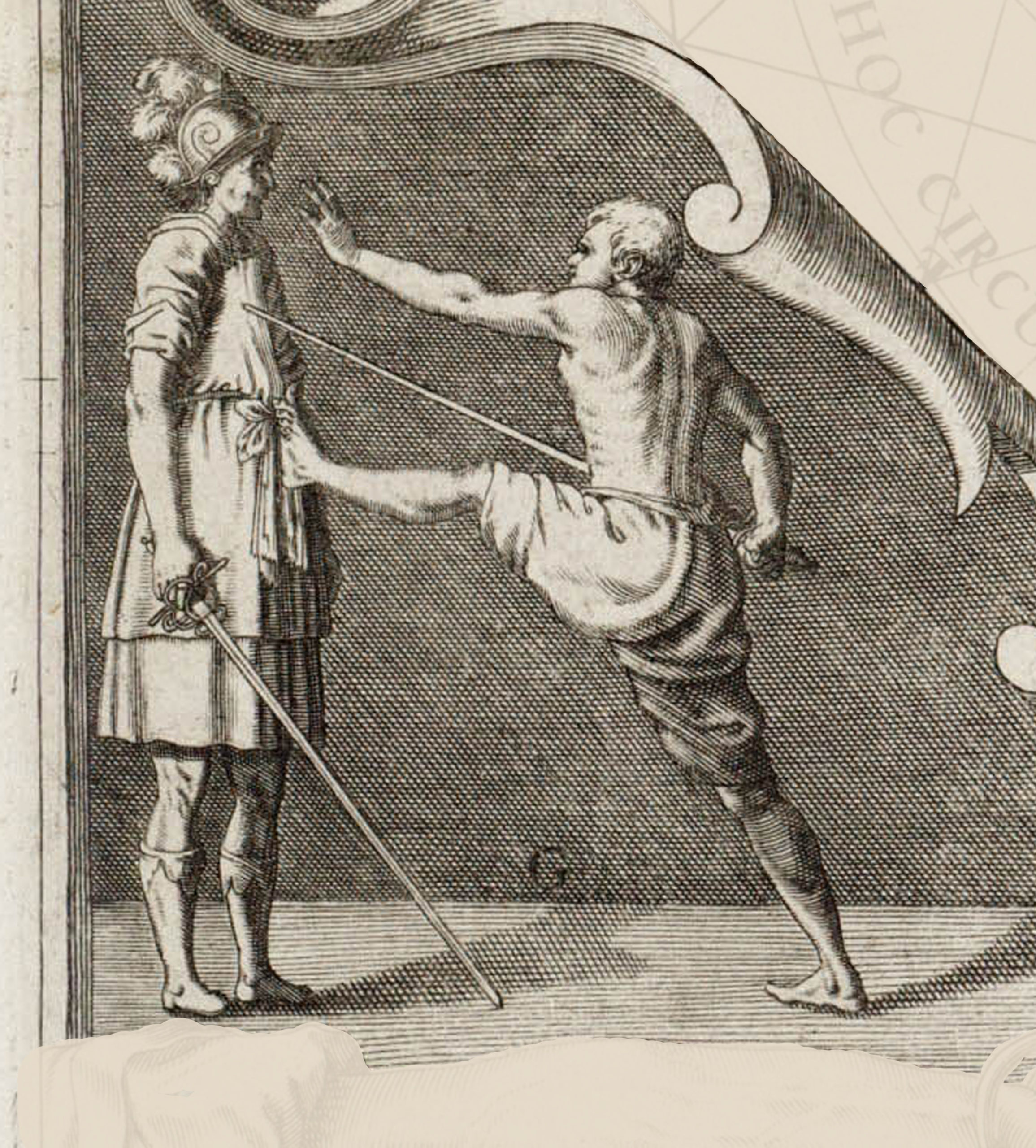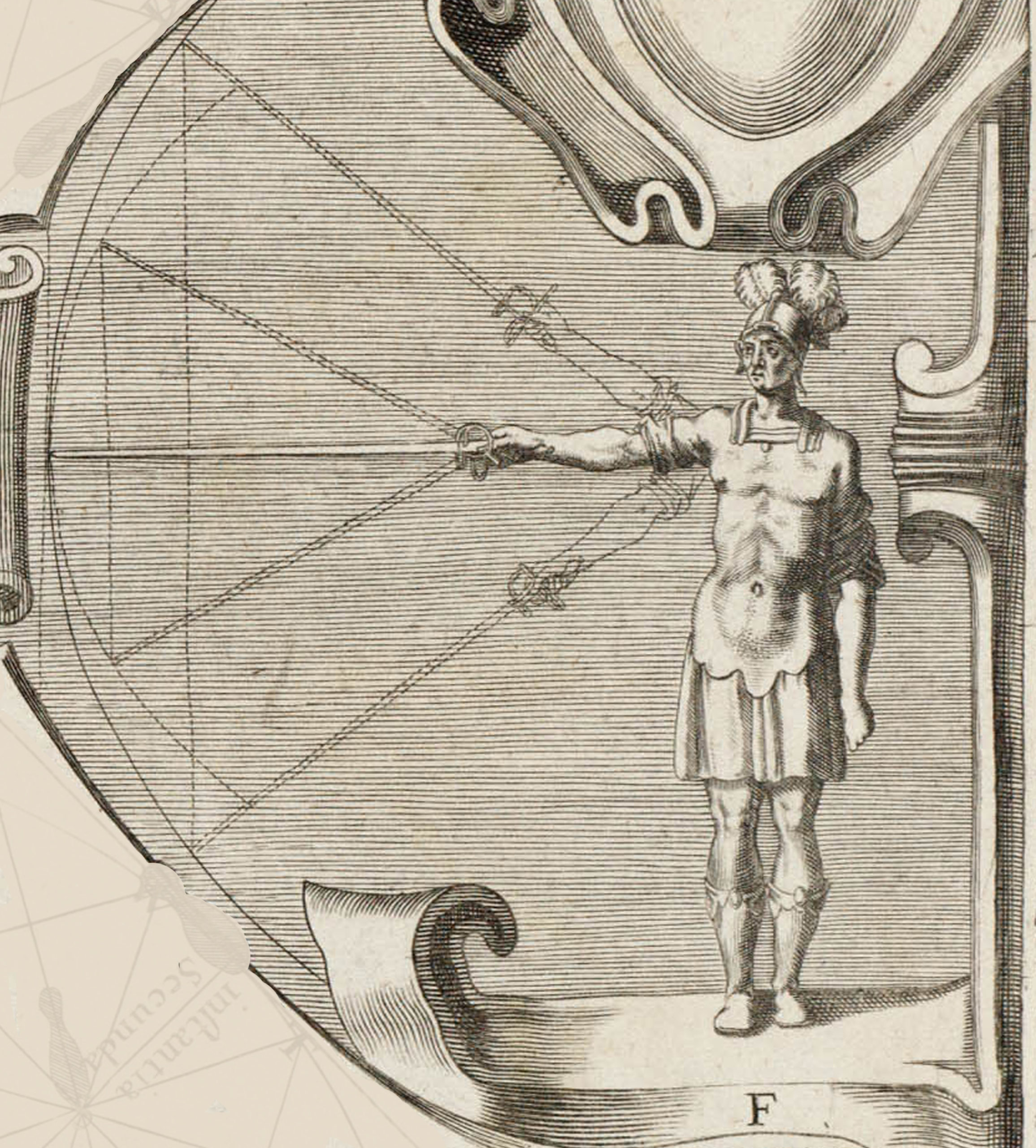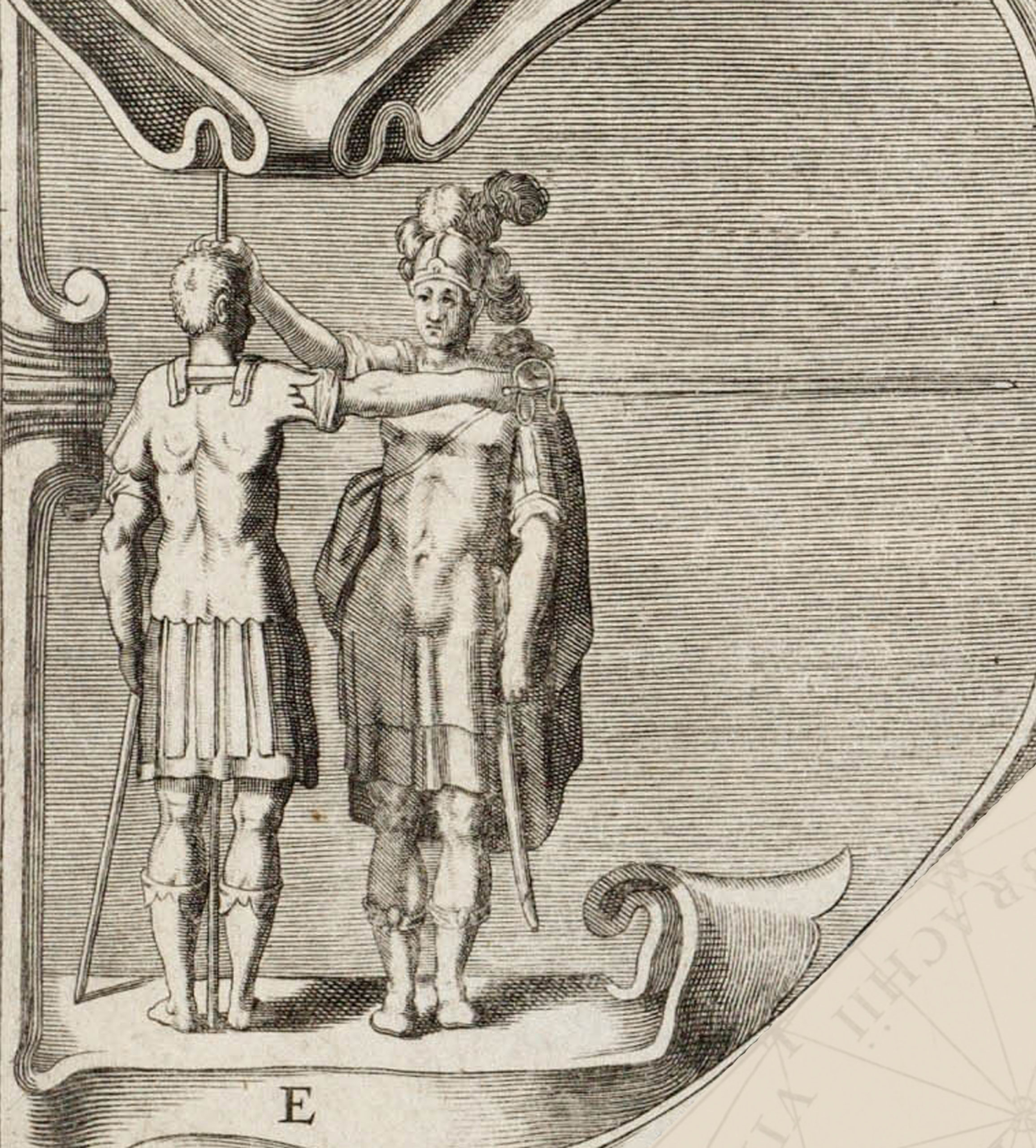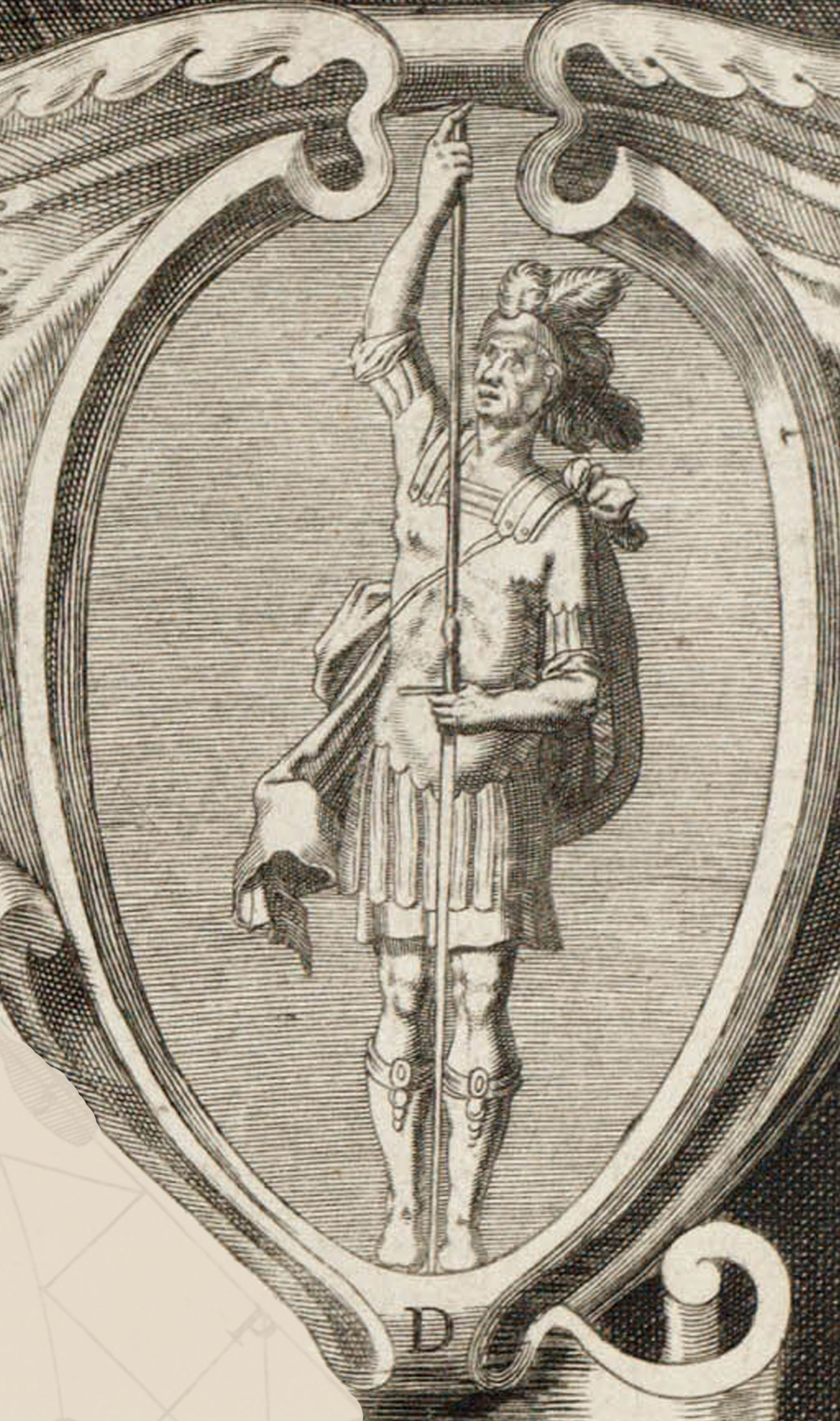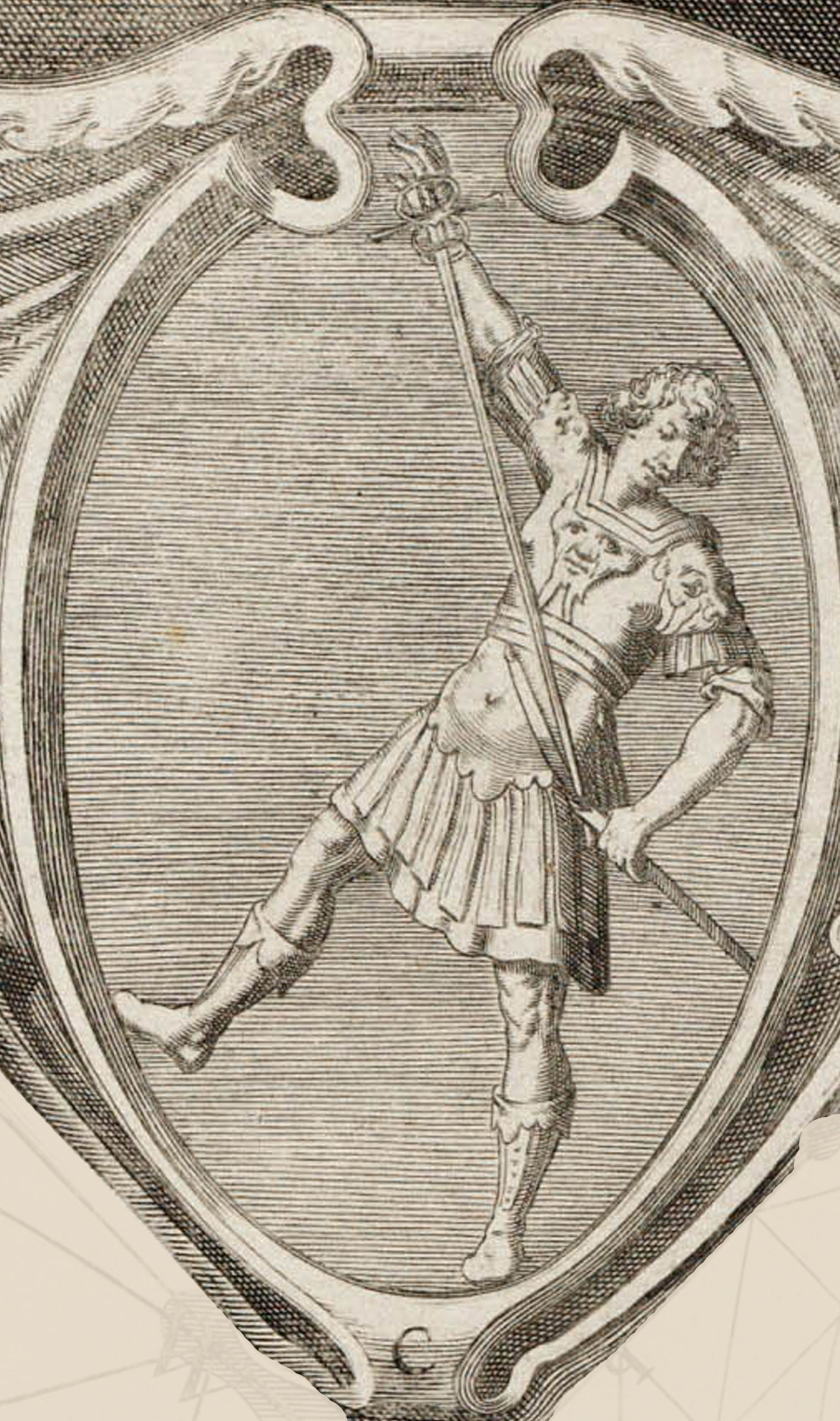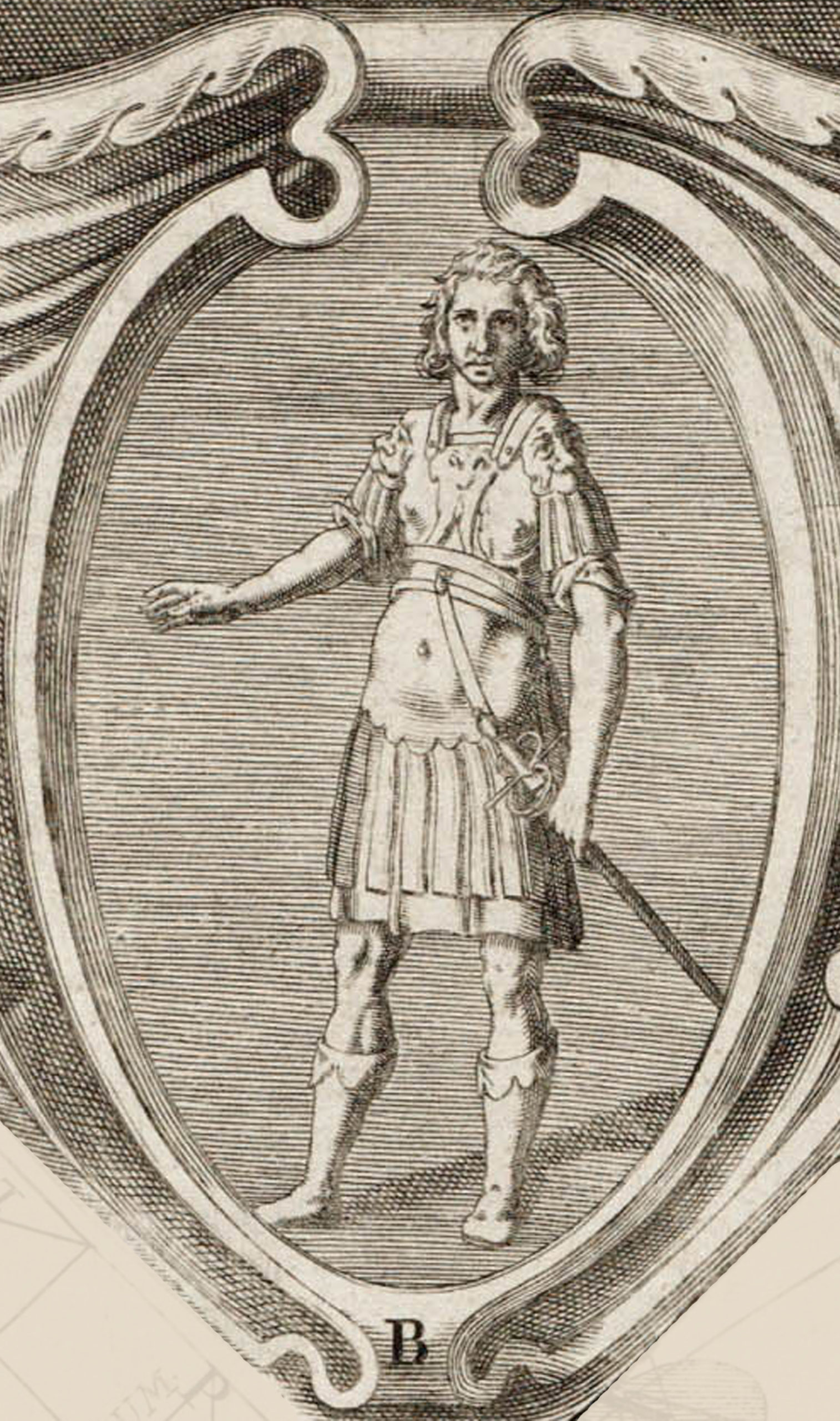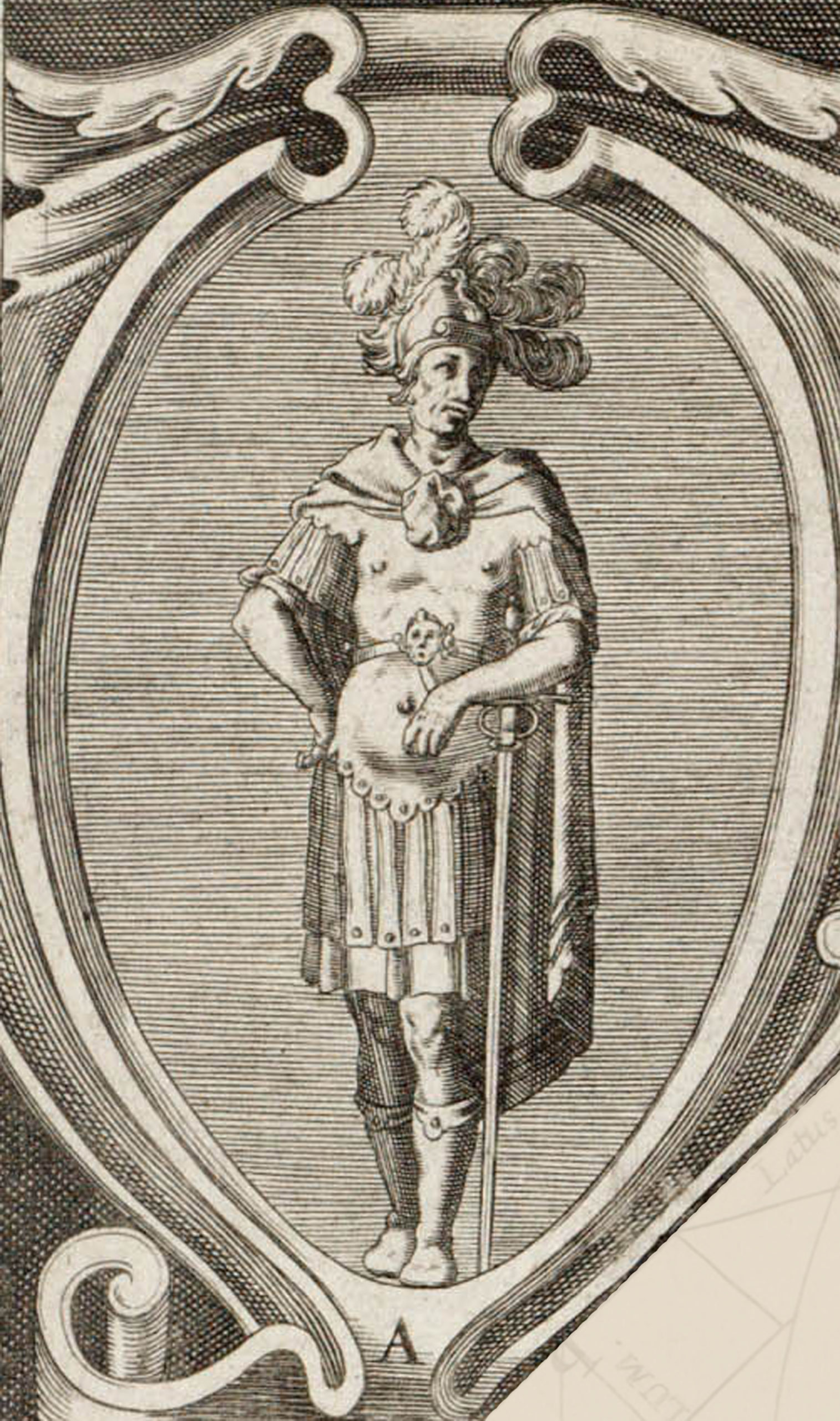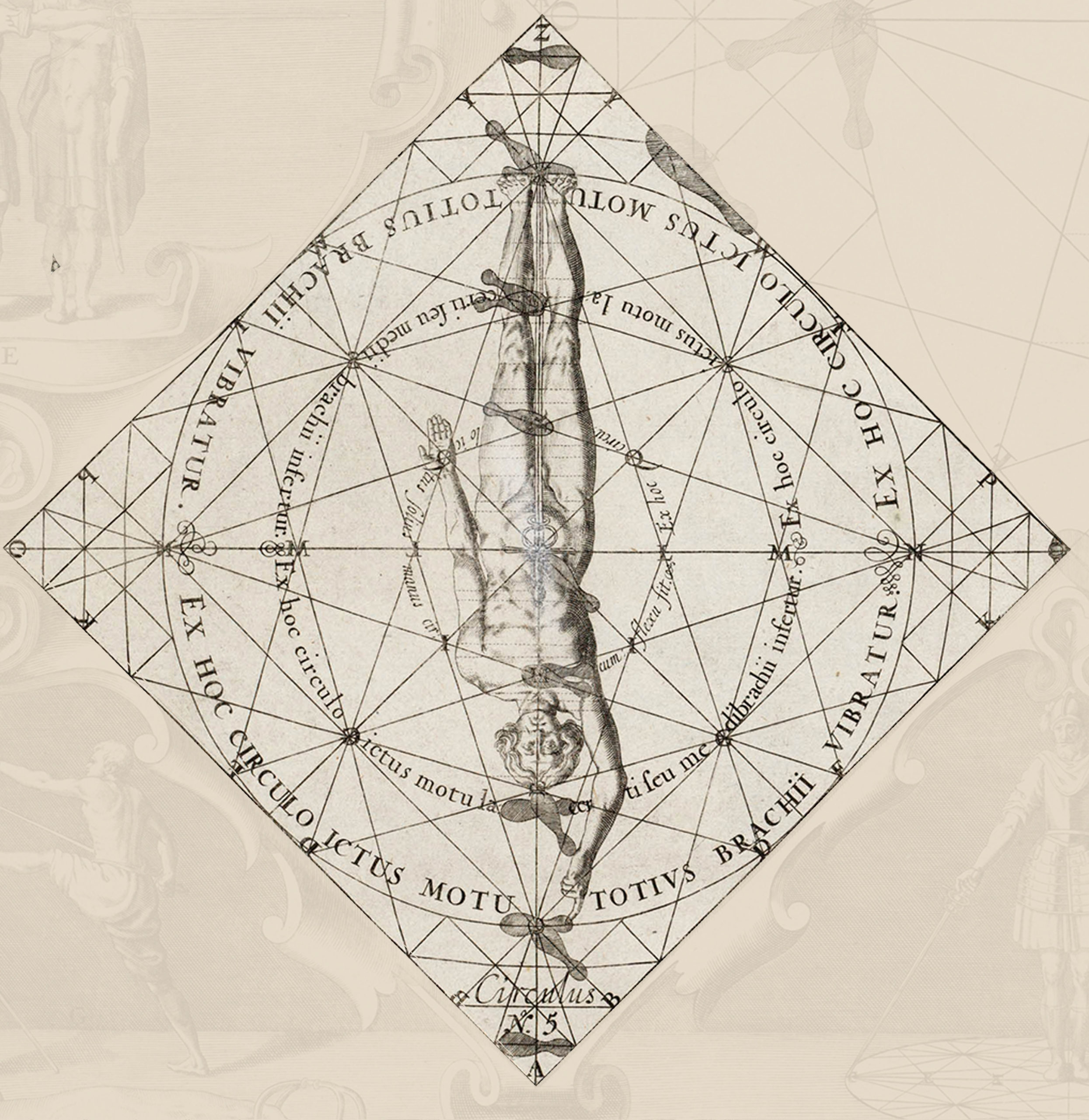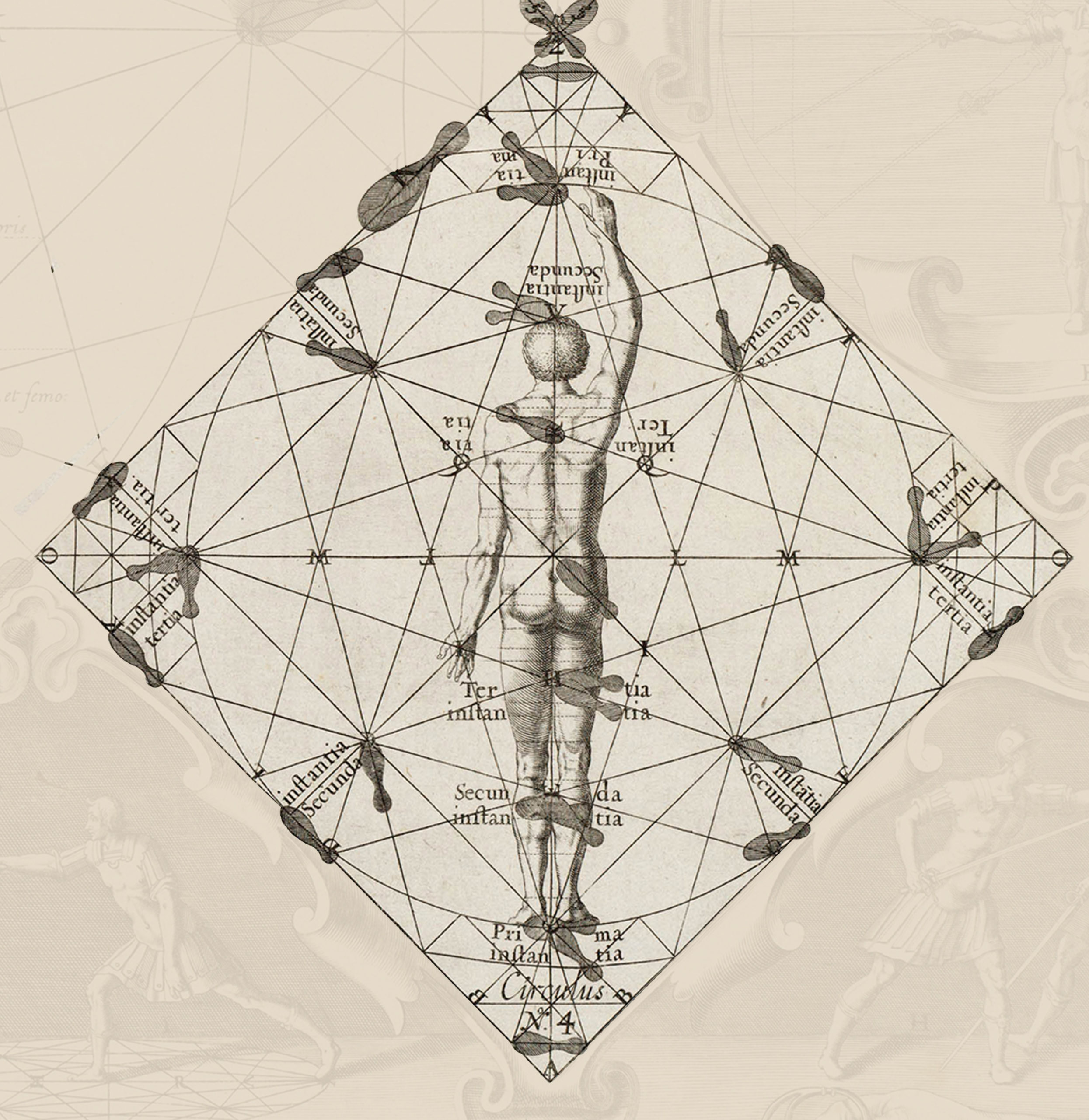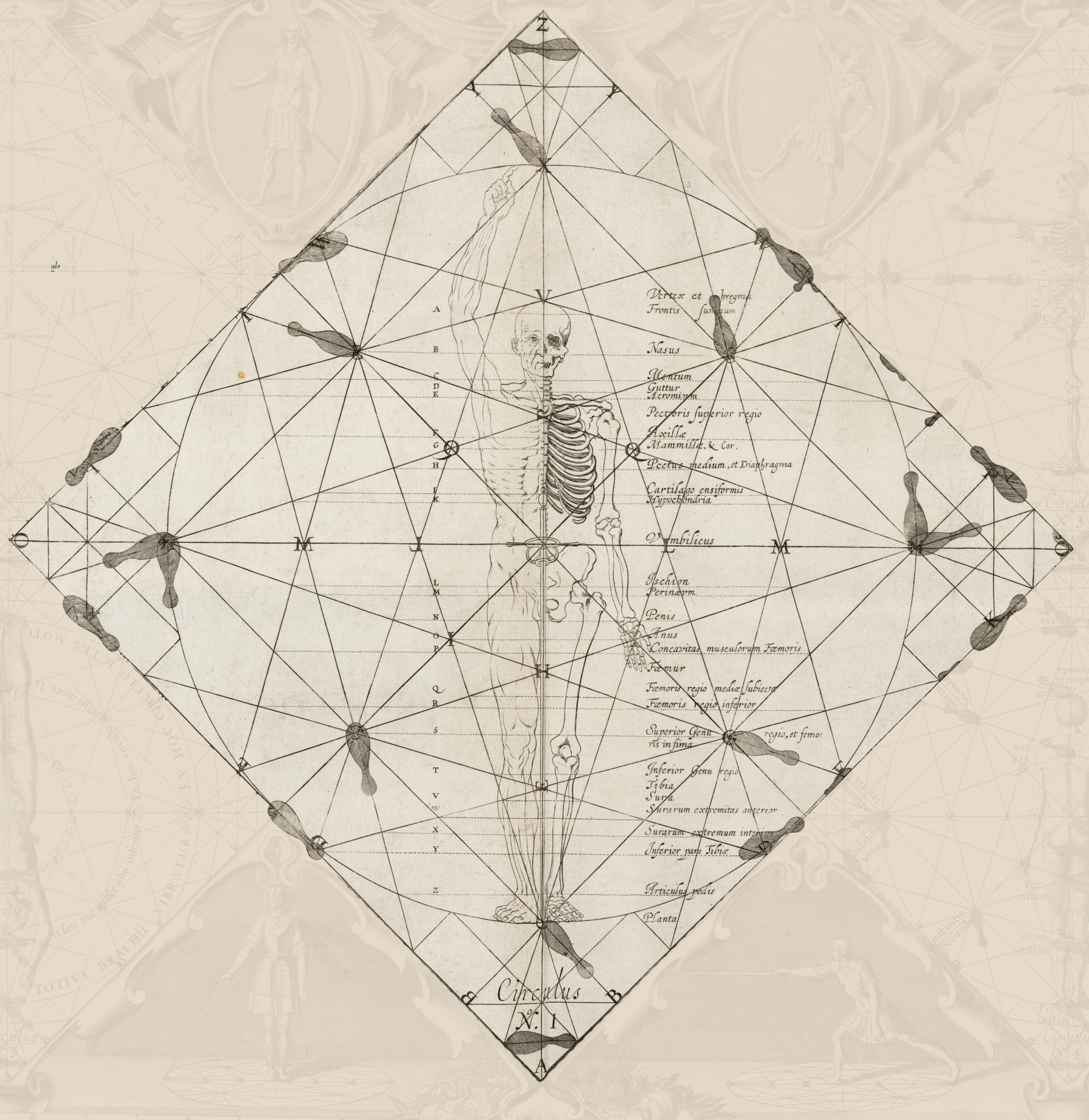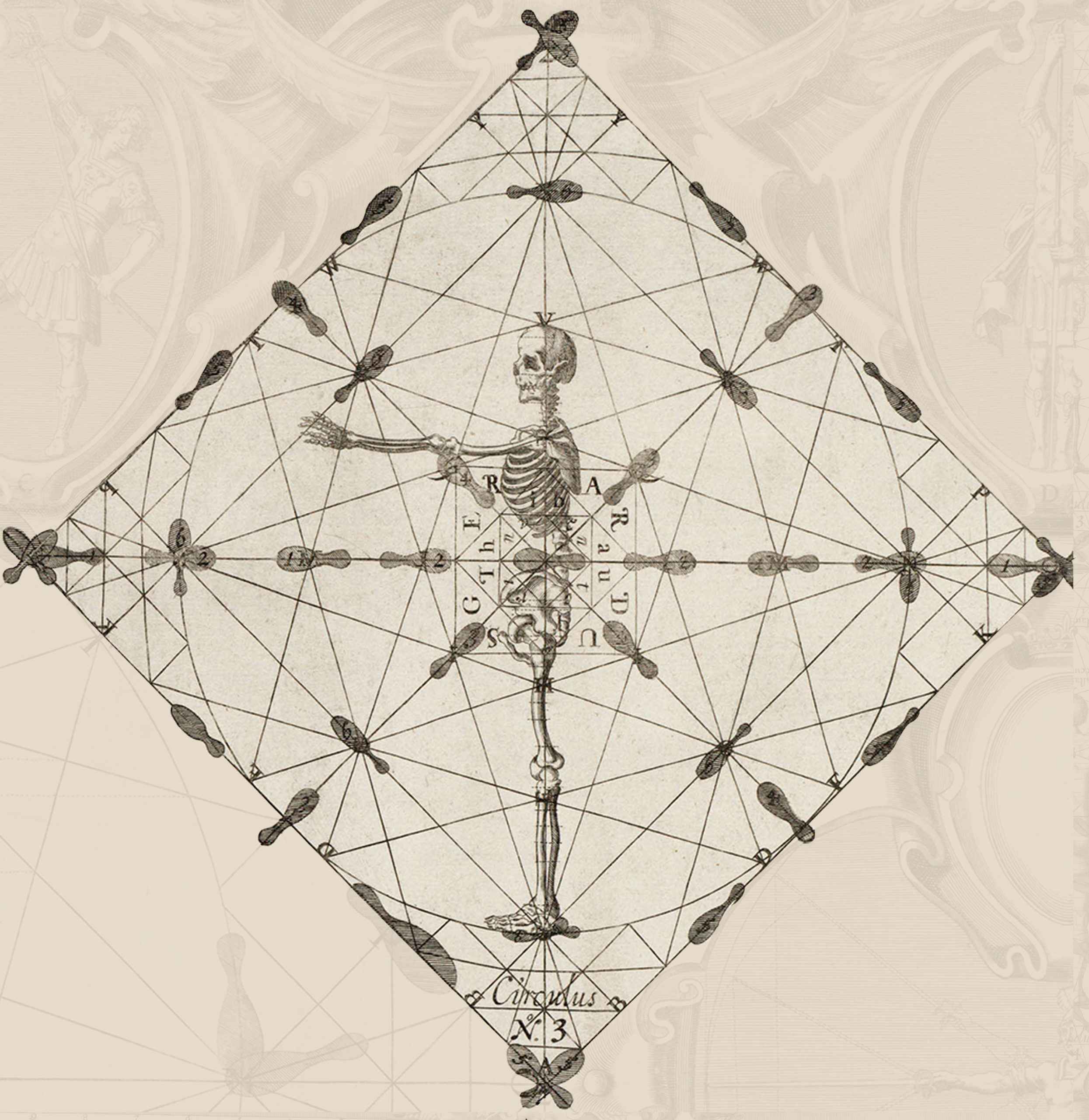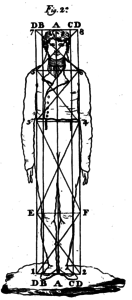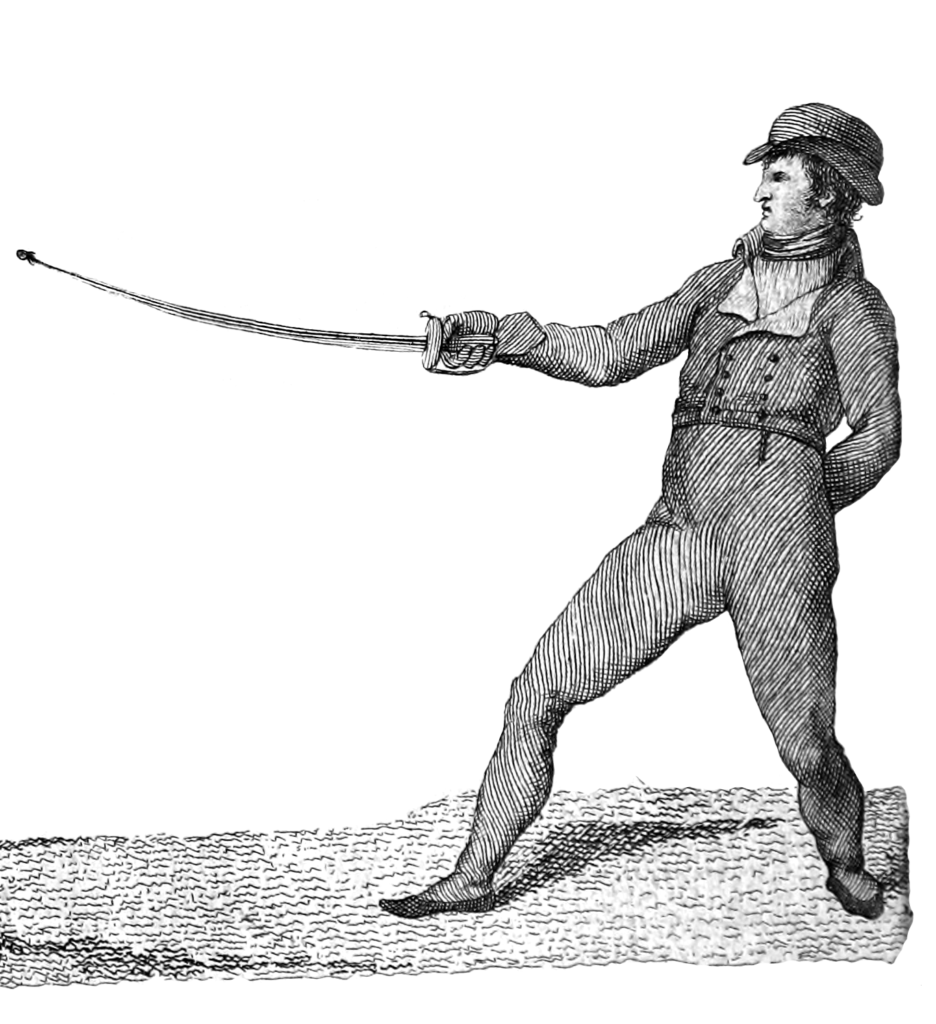127. The lack of exact expressions is a consequence of this subject’s newness. For myself, in this treatise, and in this attention, I will use the phrases first and second order to distinguish the removals. Not because the ones I am about to describe are less important, be assured, or of more limited execution since, with regard to these circumstances, they could very well challenge the primacy of the previous, but, as these emanated from the others, their very nature is to be deferred. Therefore, leaving the seconds in their order, they remain in the estimation of those who know them occupying the distinguished place that their importance will gain them.
Parry of Low Fourth
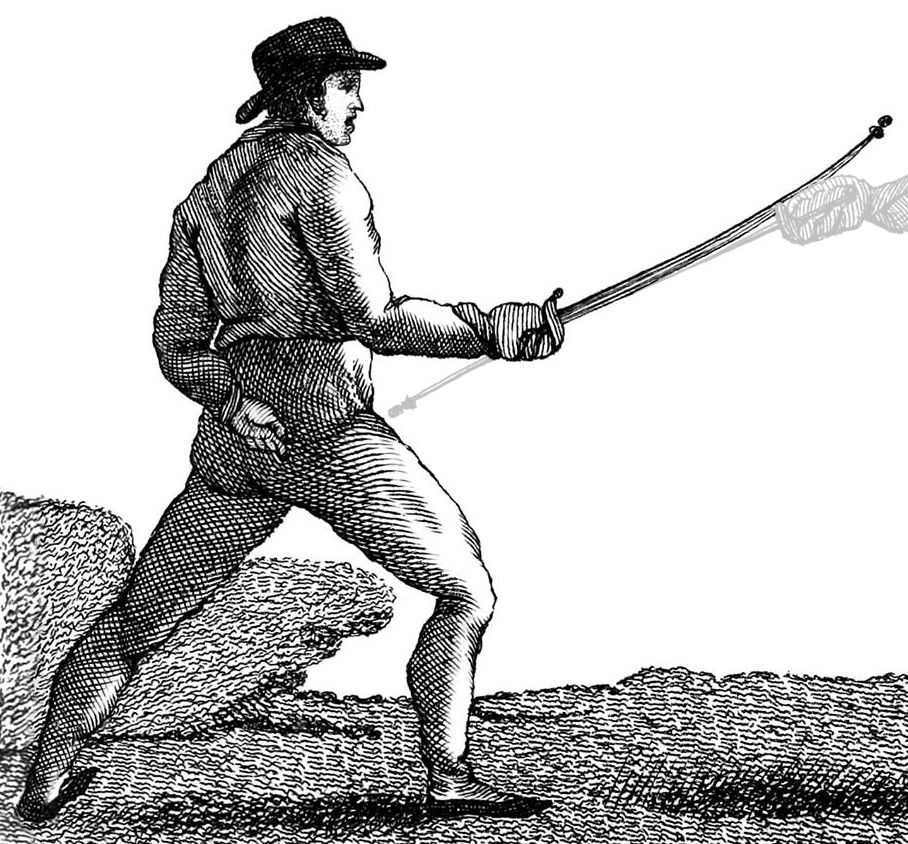
128. Suppose the combatant has just repaired a point blow with the removal of third of the first order and that the contrary, without recovering, repeated yet another thrust to the inside. In this case the hand will return on guard (or the edge looking to the ground). The elbow will join the right hip. The guard will pass to cover the left vertical without going outside of it. It will remain a third distant forward of the body, more or less, and at the height of the English, the point of the sabre as high as the shoulders of the opposite and two thirds outside of the right vertical, dominating with the strong, the weak of your opponent, which operations constitute the removal of low fourth (Plate 10, Figure 18, Letter B).
I’m a little stumped by the idea of holding the sword hand “at the height of the English.” The actual text uses “ingles” without capitalization. I don’t know if this is a typo in the original text or not. In practical terms, however, we can go off of the picture and keep the hand at the same height as the elbow, forearm parallel to the ground.”
Low Parry of Third
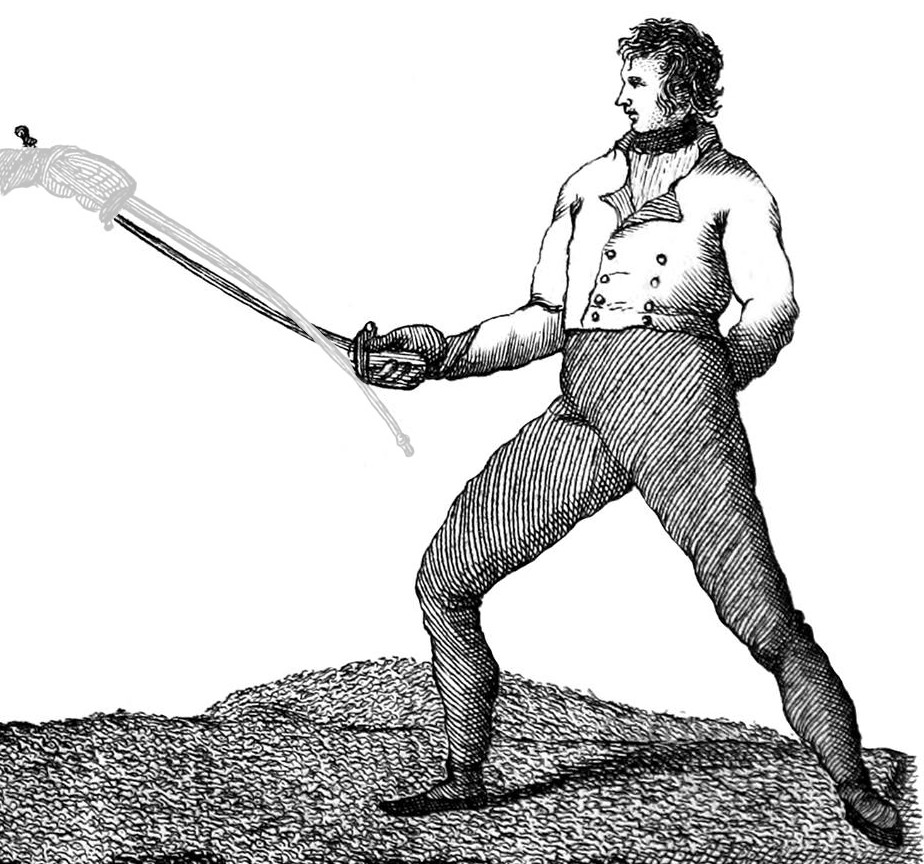
129. If the combatant has repaired a blow of the point with the removal of fourth and the contrary, without recovering, repeats an outside thrust, turn your hand into the half third position, join the elbow to the rump, as in the previous paragraph, placing the guard at the height of the English, covering with it the right vertical, not going past this plane to the outside, and placing your sabre so that the point stands at the height of the contrary’s shoulders, giving two thirds from the left, and you have formed the removal of low third (Plate 6, Figure 11, Letter D).
So, there’s that “height of the English” thing again. At this point, I’m inclined to think it’s a purposeful reference.
Removal of High Fourth
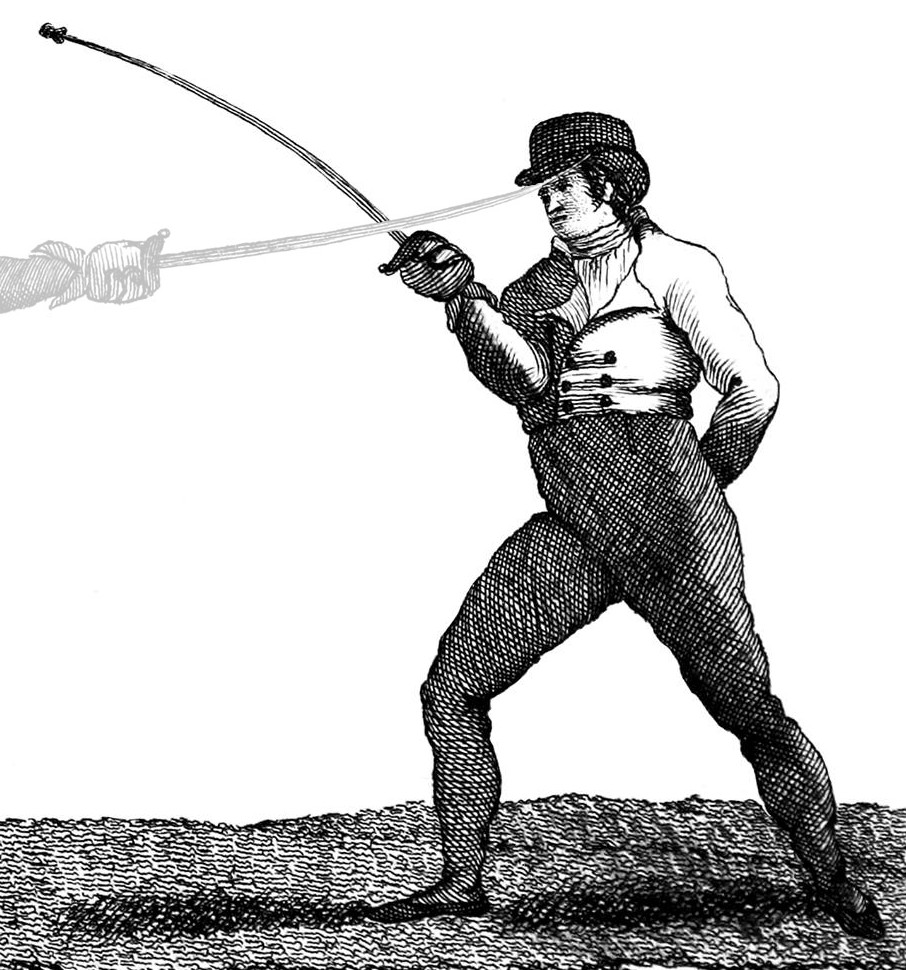
130. The combatant may very well, after evading the intention of the contrary to make a blow of the point with a removal of third, be attacked by another edge wound to the head from the inside. In this case, turn the hand immediately into fourth and, raising the arm, place the guard at the height of the shoulders on the left vertical, the blade making a diagonal in the same direction as the left diagonal of the contrary’s face. Advance the point forward two thirds higher than your head, the guard one third distant from the face to give the arm all of its force and not breaking the fundamental rule of apprehending the contrary’s weak with your own strong (Plate 1, Figure 19, Letter D).
This one absolutely does have a typo in the original text. I have left the plate/figure/letter reference intact, but that figure does not actually exist. In truth, this should be Plate 10, Figure 19, Letter C, which is the image shown above.
Removal of High Third
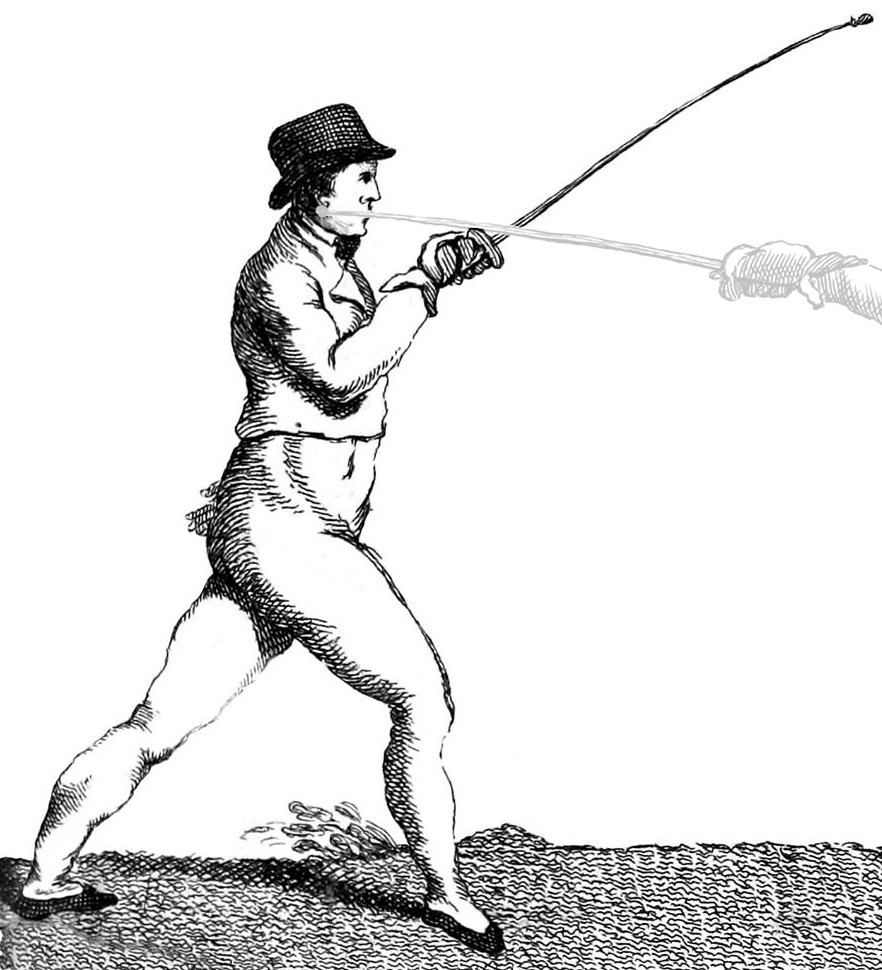
131. If you catch in fourth a blow of the point, and the contrary repeats, without recovering, a wound of the edge to the head from the outside, you will avoid the execution of his attempt by turning the hand to third while lifting the arm by bending it at the elbow to position it so that the guard is at the height of the right ear, without taking it out of the vertical on that side, a third distant from the body, and the sabre making a diagonal line equal to the right of the face of the enemy, but leaving the point two thirds higher than his head and a little to the outside of his right vertical. With this you will have formed high third (Plate 8, Figure 14, Letter B).
Parry of First
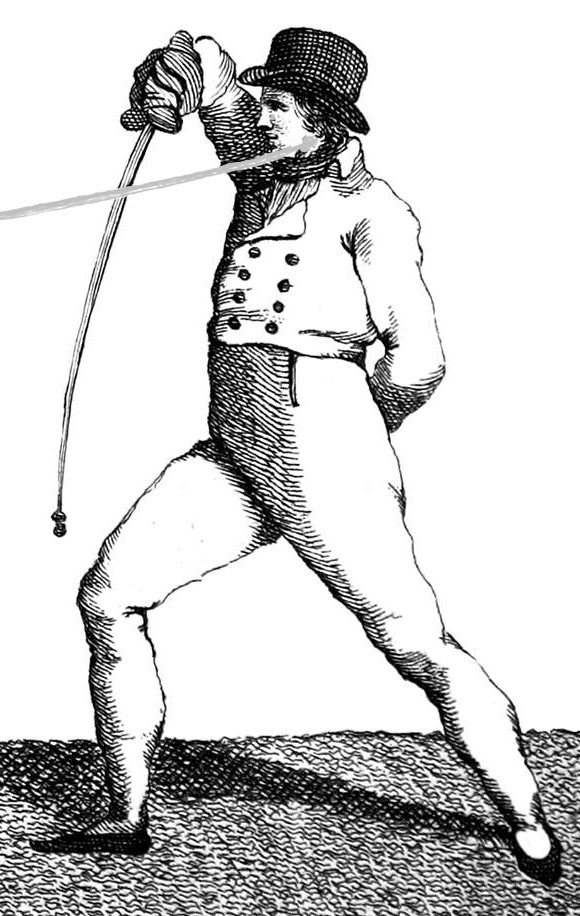
132. If you repair the enemy’s first blow with the removal of fifth and they free over the sabre, repeating without recovering, a thrust to the chest, receive his weapon by turning your hand in third, enough so that your edge looks outside the right vertical of your contrary, because this is the arrangement in which the wrist has more power. Place the bent arm so that the half from the elbow to the wrist is at the height of the supreme plane, so that you look at the enemy below your fist. The guard will be in front of the face one quarter and will be put in line with the left eyebrow, or thereabouts, almost on the vertical that corresponds to that side. The point of the sabre, facing the ground, will advance forward until it is in line with the tip of the right foot, and two feet outside of the left vertical, and you will have formed the removal of first (Plate 8, Figure 15, Letter D).
Parry of Second
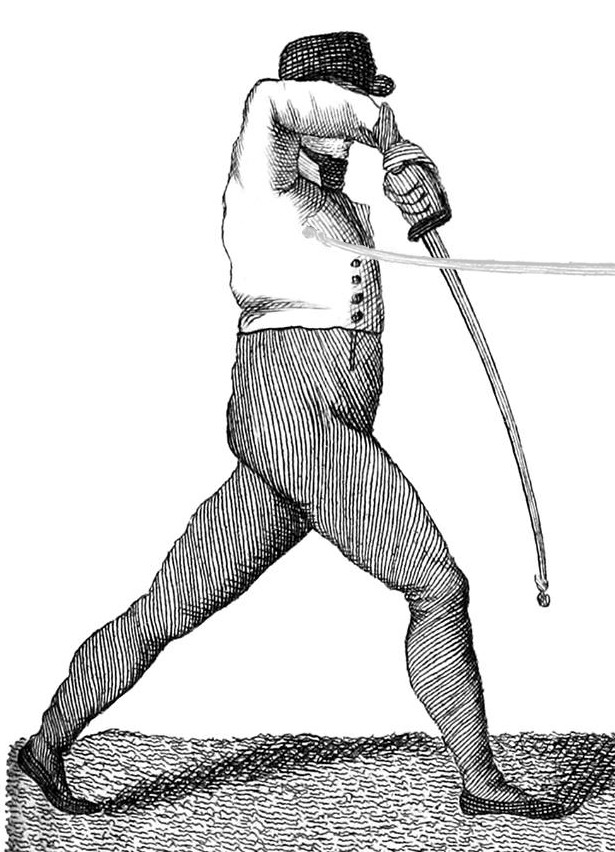
133. If the enemy’s first blow was repaired with the removal of sixth, and they, without recovering free their point above, directing a thrust to the outside, avoid this execution, putting your hand in third so that the spine of your sabre is in front of your right collateral, the edge looking outside of the left vertical of the contrary, bending the arm and lifting the elbow to the same height as in the previous, the guard in front of the face in line with the right eyebrow, so to say, almost over the vertical on this side, the point of the sabre looking at the ground and advanced to be as distant as the tip of the right foot, and two thirds outside of its vertical to form the removal of second (Plate 9, Figure 16, Letter B).
